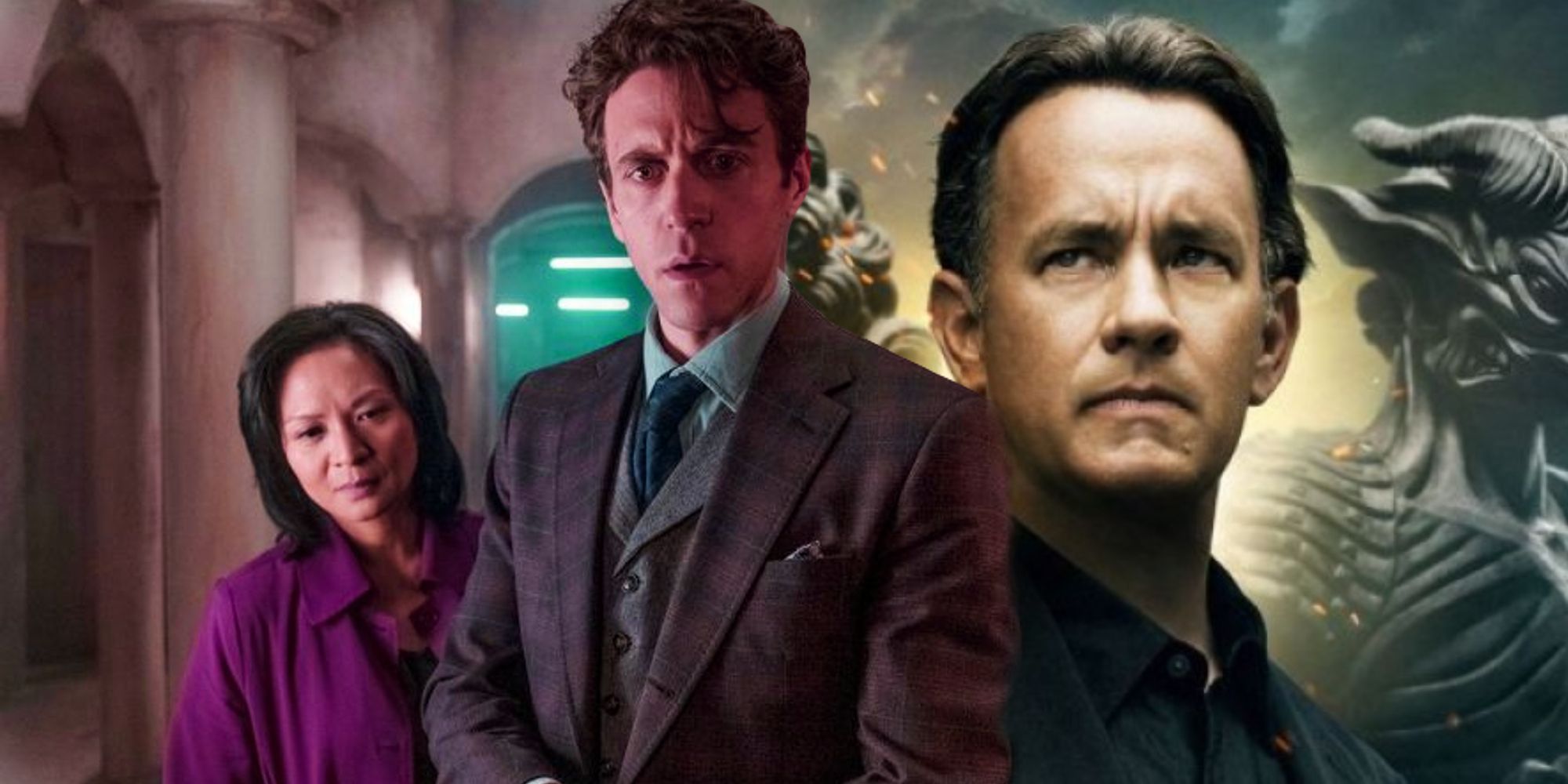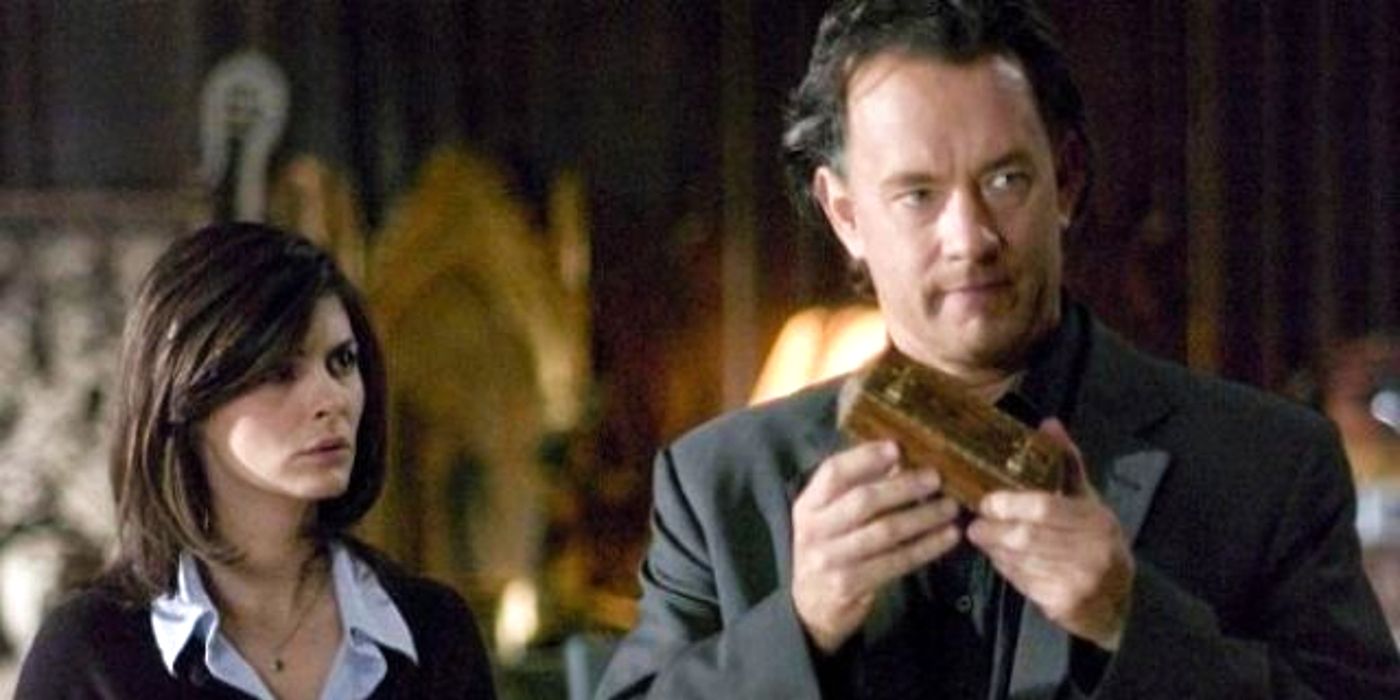
The Lost Symbol, Peacock’s prequel to the movies in the Robert Langdon franchise, is set to explore the early adventures of the Harvard symbologist. Formerly titled as Langdon, The Lost Symbol is based on Dan Brown’s bestselling novel of the same name, relying heavily on the central theme of Freemasonry in order to further Langdon’s tale. The Lost Symbol will see Ashley Zuckerman assume the titular role, and is set to premiere on September 16, 2021, on Peacock.
After the explosively popularity and controversy that surrounded Brown’s 2003 mystery thriller, The Da Vinci Code, it was an inevitability that it would be adapted to the big screen. Enter 2006’s The Da Vinci Code, with Tom Hanks taking on the mantle of the protagonist, a saga to continue for two other films, namely Angels and Demons and Inferno. In terms of literary chronology, events of The Lost Symbol take place directly after The Da Vinci Code, however, the new TV series posits it as a prequel, exploring the vignettes of a younger Langdon.
While the Robert Langdon franchise has been poorly received from a critical perspective, all three films have been commercial hits in their own right. While the plot of The Lost Symbol follows the formulaic structure of Langdon being summoned to the midst of mystery followed by a race against time, it will be interesting to witness how the series tackles this trajectory from a fresh perspective.

The term “symbol” can be traced back to the Greek root word symbolon, which means token or insignia and is usually associated with some sort of meaning. As Langdon’s role in the narrative is to decode ancient symbology so as to connect the dots and solve a bigger mystery, Brown hinges his entire premise on the knowledge of the history of symbols. For instance, Brown uses his specialization in classical iconology, pre-Christian symbology, and the description of ancient ciphers to solve the mystery of the Priori of Sion in The Da Vinci Code, while also de-mystifying the Grail lore. Langdon is expected to follow a similar strain in The Lost Symbol, as the novel’s central mystery is an ancient portal located in the depths of Washington D.C., which holds the potential to unlock the truth about the inner workings of the Freemasons.

Brown created Langdon’s character as a fictional alter ego of himself, describing him as the man he aspires to be. In order to better understand Langdon’s role in The Lost Symbol, it is crucial to understand Langdon himself, who was partially based on brilliant Brown scholar John Langdon, whose ambigrams are featured extensively in the plot of Angels and Demons. Gifted with deft problem-solving skills and an eidetic memory, Langdon became a professor of symbology at Harvard, specializing in religious symbology and art history. His manuscript titled Symbols of the Lost Sacred Feminine caught the attention of Louvre curator Jacques Saunière, involving him directly in the aftermath of his murder and the events of The Da Vinci Code.
It is also important to note that after the death of his father, Smithsonian secretary and Freemason Peter Solomon assumed the role of father figure for Langdon. Solomon’s character will play a pivotal role in The Lost Symbol, as it is after his kidnapping by Mal’akh that the events of the series will be set in motion. Then there is Mal’akh himself, the primary antagonist who uses Langdon as a means to covet a mysterious pyramid, said to grant the user with enormous power and forbidden knowledge. Moreover, as the series deals with a young Langdon, it is possible that the show will touch upon his most traumatic childhood memory of being trapped inside a well overnight, birthing a sense of claustrophobia which affects him through the course of his adventures.

The core story of The Lost Symbol revolves heavily around Freemasonry, key being the symbols associated with it, namely the pentagram, the all-seeing eye, and the five-pointed star. However, the Masonic foundation is not the sole source of these symbols, as these totems are not unique to the organization, but scattered across the course of history and human civilization. The Lost Symbol also features artifacts such as The Hand of Mysteries, which acts as the first clue for Langdon, who is then pointed to the crypts containing a pyramid with a capstone.
The Hand of Mysteries is an ancient symbol of apotheosis, symbolizing the transformation of man into god, traditionally represented with the aid of symbols such as skulls, crowns, stars, lanterns, and astrological symbols. This symbol reflects Mal’akh’s transformation and inner motivations, as he innately wishes to achieve apotheosis and forbidden knowledge. The Lost Symbol will most likely stay true to Brown’s novel and visually weave these symbols into the plot, making it a potentially thrilling and interesting watch.
from ScreenRant - Feed https://ift.tt/39cy5ai


0 Comments